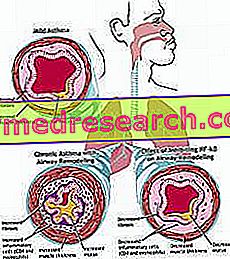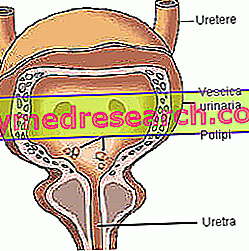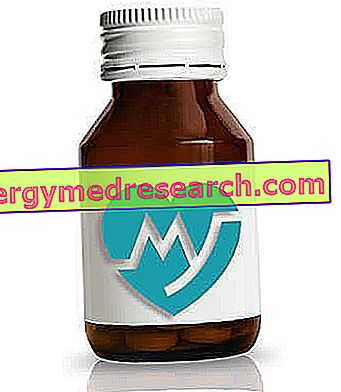The grinding or refining systems consist of a series of operations necessary to make an oil edible. In particular, seed oils are in fact often characterized by odors and colors that can be quite unpleasant.
For the single type of oil it is not said that all the grinding systems are carried out, since these are obviously selected in relation to the defects it presents; if for example an oil is devoid of unpleasant shades, the passage of the discoloration is skipped.

Grinding or refining is the set of treatments with which an oil that does not have the legal requisites or the appropriate organoleptic characteristics is marketable.
Unlike olive oil, however, seed oils are never edible after extraction and become so only with the grinding or refining treatment.
Soybean oil, for example, does not require bleaching, which is important for correcting the brown color of palm oil.
§ DEMUCILLAGINATION: serves to eliminate substances in suspension in the oil, which over time can lead to the formation of precipitates (mucilages, phospholipids, resins, sugars, protein substances). In the eyes of the consumer the bottom body in an olive oil is often considered to be synonymous with genuineness; all this, however, does not normally apply to seed oil. The industry must therefore meet the needs and expectations of the consumer, avoiding that the seed oil forms the precipitate. A demucillagination is then performed.
The substances that precipitate can be water-soluble or apolar. The water-soluble components can be removed by adding water and subsequent centrifugation, while the non-water-soluble components are removed by adding phosphoric or citric acid at 60 - 80 ° C for 5 - 30 ', followed by centrifugation.
§ NEUTRALIZATION: serves to remove free fatty acids, reducing the acidity of seed oil. It is probably the most important process among all the grinding systems and is used precisely to lower the acidity due to the presence of free fatty acids. Generally, three systems are used: neutralization with alkalis, solvent deacidification and distillation neutralization.
Neutralization with alkalis: it is the most widely used system and the least drastic one; however, it cannot be used for oils with acidity over 10%. By adding NaOH at 60 - 80 ° C, free fatty acids react with soda, forming salts or soaps that are solubilized in the aqueous phase. By phase separations and subsequent washing with water at 90 ° C these soaps are totally removed and addressed to the cosmetic industry.
Deacidification with solvent: it is based on the different solubility between triglycerides and free fatty acids. The oil is treated with a mixture of solvents based on hexane and isopropanol, triglycerides dissolve in hexane, while free fatty acids have a greater affinity for isopropanol. Subsequently, a phase separation is carried out and then from the oil the hexane is removed by distillation.
Neutralization by distillation: hot distillation process under high vacuum. It is used for oils that also need deodorization. It is a method that is little used, because it has the disadvantage of being particularly expensive, especially when an oil does not need to be deodorized.
§ DECOLORATION: serves to remove pigments, oxidation products, traces of soap and sulfur compounds. It can be carried out with chemical methods, using oxidizing agents (KMnO 4, K 2 Cr 2 O 7, ozonized air, UV rays) or with physical methods (bentonite, bleaching earths, active carbons).
§ DEODORATION: removal of volatile substances that give off an unpleasant smell (free fatty acids, fat oxidation intermediates, unsaturated hydrocarbons, proteins), by steam distillation under high vacuum at high temperature (200 ° C). It can be done together with neutralization.
§ DEMARGARINATION or WINTERIZATION: it serves to remove high-melting triglycerides which, exposed to low temperatures, condense and precipitate. The oil is slowly cooled to the "demargarization limit" temperature, maintained in these conditions for about 12 - 24 h and then filtered. This allows the product to remain stable even if subjected to high temperature changes.
This solid material, given by the high melting triglycerides that are collected, is then mixed with the other ingredients for margarine preparation.
MAIN OILS OF SEEDS
The composition of a seed oil varies according to many factors. In addition to the botanical species considered, the differences depend on the variety, the type of cultivation and the seasonal climatic trend. The composition of fatty acids may therefore undergo slight variations due to these factors. Furthermore, the accidic profile can be modified by small genetic modifications; however we cannot modify the sterol fraction, which remains for this the main index of recognition of an oil.
PEANUT OIL (Arachis hypogea)
Contains oleic (35-72%) and linoleic (13-45%) acids; features the presence of ac. Arachico (1 - 2.5%) and lignocerico (1 - 2.5%), practically absent in the other oils. Oleic acid and b-sitosterol are present in quantities similar to those of olive oil.
Peanut oil is very similar to olive oil in terms of fatty acid composition and is therefore the most used to make cuts; what changes, and that allows the recognition of fraud, is always the phytosterol fraction.
SUNFLOWER OIL (Helianthus annuus, fam. Composite)
It is characterized by high percentages of unsaturated fatty acids and modest saturated contents: oleic (14 - 65%), linoleic (20 - 75%), palmitic (3 - 10%) and stearic (2 - 6%). The sterol fraction is characterized by the presence of D7-stigmasterol (15%), typical of sunflower oil, in addition to b-sitosterol and campesterol.
The remaining panel from the extraction has a protein content of 38-40% and therefore represents a valid protein supplement for cattle and sheep.
CORN OIL (Zea mais, Graminaceae family)
The germ is removed from the seed by a process of degermination, then subjected to extraction. The oil is mainly composed of linoleic acid (34 - 62%), oleic (19 - 50%) and palmitic (8 - 19%). Among sterols abound sitosterol (66%) campesterol (23%) stigmasterol (6%) and D5-avenasterol.
It contains about 0.1% of tocopherols, a significant quantity but which decreases considerably following rectification treatments.



